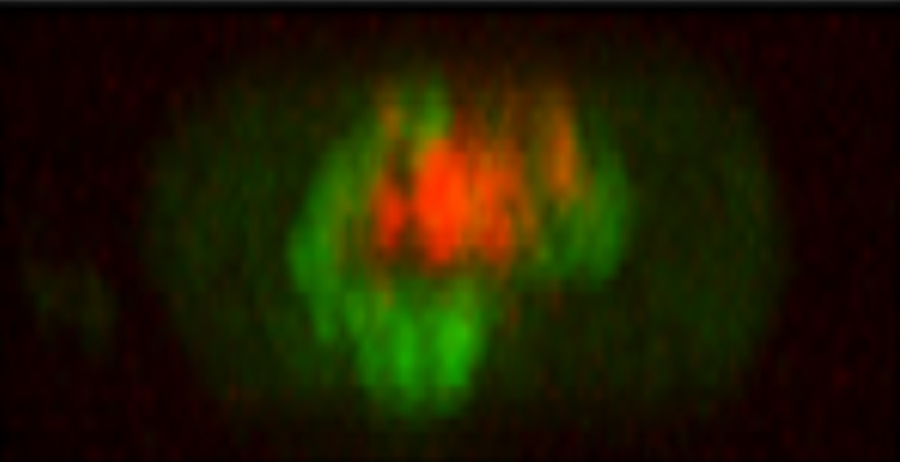Immune Synapse and Intracellular Signalling (IS.IS)
Molecular dynamics and lymphocyte decisions

The immunological synapse (IS) is the specialized adhesion that supports communication between leukocytes. The IS forms the molecular basis for antigen recognition and acquisition, cell activation/differentiation, and pathogen cytotoxicity(1-9). Cellular decisions, such as when to proliferate or differentiate, are dictated by the coordinated temporal dynamics and spatial distribution of molecular components of signalling networks, rather than by their isolated functions(10-13). A series of studies suggest that lymphocyte decisions are dictated by the molecular dynamics of signalling networks organized at the IS, which integrates signals from different immune, costimulatory, cytokine and adhesion surface receptors(6, 14-21). The lab aims to characterize the molecular dynamics at the IS that mediate lymphocyte decisions. We expect that our research will help to understand how this precise molecular dynamics enables immune responses during infection and immunotherapy while preventing pathologies and adverse effects.
References
1. Monks CR, Freiberg BA, Kupfer H, Sciaky N, & Kupfer A (1998) Three-dimensional segregation of supramolecular activation clusters in T cells. Nature395(6697):82-86.
2. Batista FD, Iber D, & Neuberger MS (2001) B cells acquire antigen from target cells after synapse formation. Nature 411(6836):489-494.
3. Stinchcombe JC, Bossi G, Booth S, & Griffiths GM (2001) The immunological synapse of CTL contains a secretory domain and membrane bridges. Immunity15(5):751-761.
4. Egen JG & Allison JP (2002) Cytotoxic T lymphocyte antigen-4 accumulation in the immunological synapse is regulated by TCR signal strength. Immunity16(1):23-35.
5. Montoya MC, Sancho D, Vicente-Manzanares M, & Sanchez-Madrid F (2002) Cell adhesion and polarity during immune interactions. Immunol Rev 186:68-82.
6. Roda-Navarro P (2009) Assembly and function of the natural killer cell immune synapse. Front Biosci 14:621-633.
7. Dustin ML & Depoil D (2011) New insights into the T cell synapse from single molecule techniques. Nat Rev Immunol 11(10):672-684.
8. Goodridge HS, et al. (2011) Activation of the innate immune receptor Dectin-1 upon formation of a 'phagocytic synapse'. Nature 472(7344):471-475.
9. Alarcon B, Mestre D, & Martinez-Martin N (2011) The immunological synapse: a cause or consequence of T-cell receptor triggering? Immunology 133(4):420-425.
10. Santos SD, Verveer PJ, & Bastiaens PI (2007) Growth factor-induced MAPK network topology shapes Erk response determining PC-12 cell fate. Nat Cell Biol9(3):324-330.
11. von Kriegsheim A, et al. (2009) Cell fate decisions are specified by the dynamic ERK interactome. Nat Cell Biol 11(12):1458-1464.
12. Kholodenko BN, Hancock JF, & Kolch W (2010) Signalling ballet in space and time. Nat Rev Mol Cell Biol 11(6):414-426.
13. Scott JD & Pawson T (2009) Cell signaling in space and time: where proteins come together and when they're apart. Science 326(5957):1220-1224.
14. Huse M, Lillemeier BF, Kuhns MS, Chen DS, & Davis MM (2006) T cells use two directionally distinct pathways for cytokine secretion. Nat Immunol 7(3):247-255.
15. Sabatos CA, et al. (2008) A synaptic basis for paracrine interleukin-2 signaling during homotypic T cell interaction. Immunity 29(2):238-248.
16. Maldonado RA, et al. (2009) Control of T helper cell differentiation through cytokine receptor inclusion in the immunological synapse. J Exp Med 206(4):877-892.
17. Maldonado RA, Irvine DJ, Schreiber R, & Glimcher LH (2004) A role for the immunological synapse in lineage commitment of CD4 lymphocytes. Nature431(7008):527-532.
18. Walzer T, Dalod M, Vivier E, & Zitvogel L (2005) Natural killer cell-dendritic cell crosstalk in the initiation of immune responses. Expert Opin Biol Ther 5 Suppl 1:S49-59.
19. Kalinski P, et al. (2005) Natural killer-dendritic cell cross-talk in cancer immunotherapy. Expert Opin Biol Ther 5(10):1303-1315.
20. Borg C, et al. (2004) NK cell activation by dendritic cells (DCs) requires the formation of a synapse leading to IL-12 polarization in DCs. Blood 104(10):3267-3275.
21. Semino C, Angelini G, Poggi A, & Rubartelli A (2005) NK/iDC interaction results in IL-18 secretion by DCs at the synaptic cleft followed by NK cell activation and release of the DC maturation factor HMGB1. Blood 106(2):609-616.
